How to Develop a SaaS Application: A Step-by-Step Guide

With the advent of the SaaS (Software as a Service) model, SaaS application development has become the primary approach for providing software access to both individuals and enterprises. Cloud-hosted, subscription-based software has replaced conventional one-time purchases due to its wide availability, scalability, and convenience. This tutorial will guide you through the fundamentals of developing a SaaS application, covering everything from selecting the right tech stack to ensuring data security and managing post-deployment maintenance. By following these guidelines, you will be well on your way to creating a successful and scalable SaaS solution. The fundamentals of developing a SaaS application will be covered in this tutorial, including selecting the appropriate tech stack, guaranteeing data security, and handling post-deployment maintenance. You will be well on your way to developing a profitable SaaS solution if you adhere to these guidelines. Step 1: Describe Your SaaS Product Idea Before getting into development, the first critical step is identifying your SaaS product. The secret to success is having a clear grasp of the value proposition and goal of your application. Start by asking yourself the following questions: What issue is resolved by the application? Who is the intended audience for you? How will your SaaS set itself out from rivals? The remainder of your SaaS application development process will be guided by clearly defining the essential features of your product and outlining your business strategy. Step 2: Select the Appropriate Tech Stack One of the most important choices in SaaS development is the choice of tech stack, as it will affect the application’s security, scalability, and performance. The set of databases, cloud services, frameworks, and programming languages you’ll need to create your application is known as your “tech stack.” Popular tech stack elements for SaaS applications consist of the following: Frontend Development: To create dynamic, responsive user interfaces, consider using JavaScript frameworks such as Angular, Vue.js, or React. Backend Development: Popular options for developing the server side of your SaaS application are Node.js, Ruby on Rails, Django, and Laravel. Database: For greater scalability, choose a NoSQL database like MongoDB or a relational database like PostgreSQL, depending on your needs. Cloud computing: Platforms for database administration, computation, and storage are offered by services like AWS, Google Cloud, and Microsoft Azure. This infrastructure is essential for creating scalable Software as a Service (SaaS) applications. Making the correct tech stack choice is crucial to guaranteeing that your SaaS can support user growth and meet growing needs. Verify that the stack you select allows for scalable architecture, which facilitates smooth expansion and simple addition of new features. Step 3: Design a Scalable Architecture When developing a SaaS application, scalability must be considered from the start. You want your app to expand along with your user base without experiencing interruptions or sluggish load times. The following are some guidelines for creating scalable architecture: Microservices: Consider dividing an application into smaller, independent services (microservices) that may be scaled separately according to demand rather to creating a monolithic one. Database Scaling: As an application expands, use database sharding or clustering techniques to spread data over several servers. Load balancing: Use load balancers to split up user traffic across several servers so that no one server is overloaded. Cloud Hosting: Make use of cloud computing services with auto-scaling capabilities so that your application may dynamically change its resource allocation as needed. If you incorporate scalability into your design from the start, your SaaS application will be more capable of managing expansion without requiring expensive modifications later on. Step 4: Pay attention to the User Interface Design A SaaS application’s user interface (UI) is among its most important components. A well-thought-out user interface (UI) may greatly improve the user experience (UX), making your software simple to use and intuitive, which increases user retention. The following considerations should be made while working on user interface design: Simplicity: Make sure the layout is clear and easy to use. There shouldn’t be a significant learning curve for users to utilize and navigate your program. Responsiveness: Make sure your SaaS program functions on all kinds of screens, including tablets, smartphones, and PCs. These days, a mobile-friendly user interface is essential. Customization: Giving customers more control over their experience with a customized user interface may increase their pleasure and prolong their engagement. Consistent Branding: To provide customers a consistent experience across all touchpoints, your user interface (UI) should be a reflection of your brand identity. Your SaaS application will look nicer and be simpler to use if you invest in strong UI/UX design. This will improve user experience and increase client retention. Step 5: Set priorities Information Security When it comes to SaaS apps, security is crucial. Users entrust you with their data, therefore a breach might have catastrophic effects on both your business’s brand and your clientele. Throughout your development process, putting strong data security safeguards in place should be your first concern. Here’s how to guarantee your SaaS application is secure: Data Encryption: Make sure that robust encryption technologies, such as TLS or AES, are used to protect any sensitive data, both in transit and at rest. Authentication & Authorization: To guarantee that only authorized users may access particular features or data, utilize role-based access control (RBAC) and multi-factor authentication (MFA). Data backups: Make sure you have regular backups of your data in case of emergencies or security breaches. Compliance: Verify that your SaaS application conforms with data rules such as GDPR, HIPAA, or SOC, depending on your target market. 2. Audits of security: Conduct frequent vulnerability assessments and security audits to find such vulnerabilities before attackers may take advantage of them. Data security may be given top priority during the development process to safeguard both your consumers and your company. Step 6: Test Thoroughly You should thoroughly test your SaaS application before deploying it to make sure everything functions as it should. Testing assists in identifying defects, performance problems, and security flaws that could have an adverse effect on users. Important testing categories consist of:
The Benefits of Mobile Truck Maintenance for Fleet Operators

When overseeing a big fleet of vehicles, fleet managers confront a variety of difficulties, from avoiding downtime to preserving the fleet’s general health. Mobile truck maintenance services are one approach that is gaining popularity in the sector. By providing on-site assistance, these services lessen the need to remove cars off the road for maintenance, which may greatly increase fleet efficiency and save expenses. We’ll look at the advantages of mobile truck repair in this article, as well as how it can completely transform fleet management. We’ll also discuss the primary services that these businesses offer, such fleet management, mobile truck repair, and maintenance for commercial vehicles. Mobile Truck Repair Services: Convenience and Reduced Downtime Time is money in fleet operations. When a vehicle needs repairs, it can cause late deliveries, irate customers, and lost money. Vehicles may be serviced anywhere they are, whether they are at a depot or on the road, thanks to mobile fleet maintenance, which does on-site repairs and maintenance. Because mobile truck repair near me is so convenient, a lot of fleet operators choose it. You may avoid driving to a repair shop and waiting for availability by doing the repair on-site. Alternatively, whether it’s normal fleet vehicle maintenance or on-site truck repair, a mobile expert can handle the problem right away. Due to the availability of mobile diesel truck repair, operators may meet deadlines and lessen the financial effect of vehicle downtime by minimizing downtime and getting trucks back on the road sooner. Cost-Effective Maintenance Mobile truck repair services provide a solution to fleet operators who are often looking for methods to save operational expenses. Conventional garage-based repairs may include additional expenses for labor, needless components, or towing. On the other hand, mobile services may frequently save these expenses by eliminating needless travel and concentrating on the immediate need. Furthermore, mobile experts assist in identifying any problems before they develop into significant, expensive repairs by providing preventative fleet vehicle maintenance. Trucks may be kept in service for extended periods of time by scheduling routine maintenance procedures like tire rotations, brake inspections, and oil changes at convenient times and places for the fleet. Proactive maintenance reduces unplanned breaks and increases vehicle lifetime, which improves fleet management services. Enhanced Fleet Safety and Compliance For every fleet operation, safety and regulatory compliance are essential. Maintaining vehicles in top condition is crucial for keeping other drivers and pedestrians safe when driving. Fleet owners may keep ahead of required inspections and repairs with on-site commercial vehicle maintenance services. Mobile semi truck repair technicians are capable of doing a wide range of tasks, such as diagnostics and brake repairs, to assist make sure your fleet complies with safety regulations. Having mobile truck repair services available to you on a regular basis makes adhering to industry rules much simpler. A fleet with well-maintained cars and fewer breakdowns is also less likely to have mishaps, malfunctions, or infractions that can result in fines or other consequences. This contributes to a safer work environment for drivers and a better reputation for the company. Scalability for Growing Fleets Your fleet’s growth means that you’ll require more maintenance. Services for mobile truck maintenance may grow with your company. Mobile truck repair services are flexible enough to accommodate any size fleet or small company, so you may customize the service to meet your specific requirements. Access to truck fleet services that offer on-demand maintenance is helpful for expanding fleets as it guarantees that all vehicles—from light-duty to heavy-duty—get the repair they need without interfering with daily operations. Furthermore, fleet-wide service agreements are another feature that mobile repair providers may supply. These agreements let you get special pricing and maintenance plans that are tailored to your fleet’s unique requirements. Reduced Towing and Roadside Emergency Costs Roadside breakdowns can lead to expensive towing costs and the cost of waiting for a repair facility to fix the problem. By offering on-site truck repair and emergency help right at the breakdown place, mobile truck repair near me services significantly reduce these costs. When it comes to fixing flat tires, transmission problems, or braking issues, mobile diesel truck repair specialists can offer prompt, dependable assistance at a significantly lower expense. Furthermore, drivers may be put in risk when doing roadside repairs. In addition to ensuring the safety of the driver and other drivers, having a skilled technician come out promptly to inspect and fix the vehicle allows for a speedy return to service. Customized Maintenance Programs The capacity to design specialized maintenance schedules is one of the primary advantages of mobile fleet maintenance. Fleet managers may collaborate with suppliers to create maintenance plans that suit their operating requirements. Whether your fleet needs repair on a weekly, monthly, or quarterly basis, mobile truck services can work around your schedule. You can guarantee that all cars receive regular, normal maintenance without interfering with everyday operations by personalizing these services. This helps to maximize your fleet’s uptime by preventing small problems from becoming expensive repairs. Environmental Benefits There are further environmental benefits to mobile truck repair. The carbon footprint of fleet maintenance is reduced when experts visit the fleet’s site rather of driving cars to a far-off repair facility, which increases fuel consumption and emissions. Regular commercial vehicle maintenance also lowers pollution and increases fuel economy. Trucks that are well-maintained often operate more effectively, which benefits the environment and lowers fleet fuel costs. Improved Driver Satisfaction and Retention Since drivers are the foundation of every fleet operation, fleet managers place a high premium on their happiness and safety. In addition to decreasing downtime, mobile truck repair services increase driver satisfaction by removing the inconvenience of long shop trips and vehicle failures. Drivers can concentrate on their work without being distracted by mechanical problems or delays when they are aware that they can get prompt and dependable on-site truck repair. This can increase driver retention, which is important in a field where turnover is common, and raise job satisfaction. Conclusion Mobile truck repair is a
The Power of Medical Industry Outsourcing

Today’s hectic healthcare environment makes it more important than ever to streamline processes and increase efficiency. Medical sector outsourcing is one tactic that healthcare firms are using more and more to stay competitive and provide high-quality service. By assigning non-core work to other parties, healthcare providers—often referred to as healthcare BPOs, or business process outsourcing—are able to concentrate more on patient care and innovation. We will examine the power of outsourcing in the medical business in this blog, emphasizing its advantages, important services like outsourced billing and claims processing, and its function in guaranteeing HIPAA compliance and round-the-clock medical care. We’ll also look at the expanding practice of medical transcription outsourcing and how it helps provide affordable healthcare. Enhancing Efficiency with Healthcare BPO Healthcare businesses often struggle to strike a balance between administrative duties and providing high-quality patient care. This is when BPO for healthcare enters the picture. Healthcare providers may increase their operational efficiency and concentrate on improving patient outcomes by outsourcing certain administrative tasks including invoicing, transcribing, and claims processing. Healthcare institutions can assign labor-intensive tasks, such medical transcribing, coding, and document management, to specialist service providers through outsourcing, which provides a customized solution. This lessens the workload for medical personnel and aids in the optimization of internal resources. Outsourcing gives businesses the chance to operate more efficiently, with fewer mistakes and quicker turnaround times, whether they are hospitals, clinics, or private practices. Additionally, BPO partners provide their industry experience, guaranteeing that your company complies with laws such as HIPAA. Outsourced Billing and Revenue Cycle Management Simplifying the billing and accounting process is one of the biggest benefits of outsourcing to the medical sector. Healthcare practitioners may concentrate on patient care by using outsourced billing services, which handle the difficult tasks of submitting claims, contacting payers, and guaranteeing prompt payments. The process of billing for healthcare is infamously difficult since insurance policies, coding schemes, and regulatory requirements are often changing. Healthcare companies may enhance cash flow, cut down on mistakes, and prevent delays by using outsourced billing services. Furthermore, outsourcing companies usually maintain current knowledge of HIPAA regulations and industry norms, guaranteeing that your company stays compliant and avoids expensive fines. Outsourcing billing has changed the game for a lot of healthcare providers in terms of preserving their financial stability, cutting costs associated with operations, and increasing overall productivity. Efficient Claims Processing for Faster Reimbursement Claims processing is another important area where BPO services for healthcare excel. Any healthcare provider’s ability to make money depends on the claims procedure, which may be laborious and error-prone. Whether managing Medicaid, Medicare, or commercial insurance claims, outsourcing this work may save a lot of time and improve accuracy. Healthcare providers may submit claims more quickly, follow their progress, and take care of any problems that come up throughout the reimbursement process if they outsource the processing of their claims. By having dedicated teams working around the clock to handle claims, providers may guarantee speedier payments, enhance coding accuracy, and drastically lower the number of denials. Furthermore, by reducing the administrative load on internal staff, outsourcing claims processing frees them up to focus on patient-facing activities. This helps with increased patient satisfaction and organizational efficiency. Medical Transcription Services: Accuracy and Timeliness Another crucial task that healthcare businesses are increasingly outsourcing is medical transcription. Healthcare professionals may preserve accurate patient records—which are essential for diagnosis, treatment planning, and legal documentation—by transcribing audio recordings into written reports. Internal transcribing is often an expensive and time-consuming procedure. Healthcare providers may guarantee that medical transcribing assignments are performed by experts in medical language and terminology via outsourcing. For medical records, consultations, and other paperwork, this results in increased accuracy rates and quicker response times. From offering specialist transcribing for various medical specialties to guaranteeing compliance with data security regulations like HIPAA, outsourced medical transcription services may be tailored to match the unique demands of healthcare companies.This helps prevent legal issues while ensuring that all medical records are processed with care, precision, and confidentiality. Ensuring HIPAA Compliance In the healthcare sector, patient privacy and data security are critical, hence HIPAA compliance is an essential part of any outsourcing contract. Healthcare firms risk serious fines for violating the Health Insurance Portability and Accountability Act’s (HIPAA) stringent requirements for patient information protection. It is crucial to work with a provider who is aware of and compliant with HIPAA requirements when outsourcing any healthcare-related function, including medical transcription, billing, or claims processing. Strict data protection protocols are in place at the majority of respectable BPO companies in the medical sector, guaranteeing that all information about patients is treated with the greatest level of security. Healthcare firms may protect patient data, stay in compliance with regulations, and lower their risk of data breaches and HIPAA violations by selecting outsourcing partners who emphasize HIPAA compliance. Patients and healthcare professionals may rest easy knowing that private data is being handled securely thanks to this. Cost-Effective Healthcare Solutions The desire for affordable healthcare solutions is one of the main drivers of outsourcing in the healthcare sector. Healthcare providers may cut personnel expenses, avoid investing in costly in-house software and equipment, and streamline operations by outsourcing non-core services. Managing administrative tasks may be done more scalably and adaptably by using outsourcing services like claims processing, transcribing, and billing. Healthcare companies don’t need to spend money on costly infrastructure or full-time employees to have access to specialist expertise and technologies. By lowering operating costs, this enables clinicians to devote more funds to patient care and innovative medical practices. Furthermore, outsourcing provides healthcare businesses with the ability to adjust service levels as needed, which makes it a perfect fit for institutions experiencing varying workloads. 24/7 Medical Support: Around-the-Clock Efficiency In the current healthcare environment, being accessible around-the-clock is a need rather than a choice. To guarantee seamless operations and ongoing care, healthcare providers require access to dependable, round-the-clock medical assistance for everything from patient care to administrative duties like invoicing and claims processing. Healthcare providers may
The FMCSA’s Detention Time Study: What Carriers Need to Know

In order to better understand the effects of lengthy wait periods on drivers and the trucking industry, the Federal Motor Carrier Safety Administration (FMCSA) has carried out a Detention Time Study. Understanding the study’s conclusions is crucial for carriers if they want to increase operational effectiveness, guarantee driver happiness, and adhere to Hours of Service (HOS) laws. The main conclusions from the FMCSA’s detention time research will be dissected in this blog, along with information on how Aventex Consulting can assist carriers in overcoming these obstacles and enhancing their commercial operations. Detention Time and Its Significance The amount of time that commercial motor vehicle (CMV) drivers spend waiting at receiving or shipping facilities after the designated time for cargo loading or unloading is referred to as detention time. Usually, drivers are given a window of two hours, after which detention time starts. Extended periods of detention have a broad impact on the transportation sector. Delivery timetables are thrown off, freight transportation takes longer than expected, and truck drivers’ pay suffers because many of them are paid by the mile rather than the hour. In addition to decreasing carrier operating efficiency, long wait periods can put drivers’ safety in jeopardy as they attempt to make up lost time. The Findings of the FMCSA Detention Time Study The FMCSA’s study provided a comprehensive overview of the problem. Here are the key findings carriers should be aware of: Significant Impact on Hours of Service (HOS) Compliance Detention time limits the hours truck drivers can legally spend on the road, impacting their ability to meet HOS regulations. This can force drivers to either cut trips short or risk violating federal guidelines, both of which have negative consequences for carriers. Driver Detention and Safety Concerns One alarming outcome is the study’s link between detention time and safety. When drivers experience extended wait times, they often feel pressure to make up for lost hours by driving faster or extending their hours beyond safe limits. This can increase the likelihood of accidents. Compensation Issues The study highlighted that truck driver compensation issues are exacerbated by detention time. Many drivers are not compensated for waiting time, meaning their earnings decrease as detention time increases. This leads to job dissatisfaction and high driver turnover rates, which can be costly for carriers. Impact on Carrier Operational Efficiency Carriers suffer operational inefficiencies due to delays at loading docks. Excessive wait times disrupt the planning and scheduling of trips, leading to idle trucks, fewer completed loads, and an overall reduction in productivity. This inefficiency adds to operational costs, especially when fuel, labor, and maintenance expenses continue to accumulate. Truckload Industry Challenges Detention time is one of the leading contributors to inefficiencies in the truckload industry, where tight schedules and narrow profit margins are the norms. The study suggests that carriers need to find ways to mitigate these challenges to remain competitive. Freight Shipping Delays and Customer Dissatisfaction Delays at the docks lead to freight shipping delays, which can ripple across the entire supply chain. Customers rely on timely deliveries, and failure to meet deadlines due to detention issues can damage relationships with shippers and receivers. What Carriers Can Do to Mitigate Detention Time As the FMCSA study makes clear, addressing detention time is critical for improving driver satisfaction, boosting efficiency, and ensuring compliance with hours of service regulations. Here are a few steps carriers can take: Partner with Shippers and Receivers Work with your shippers and receivers to minimize wait times. Establishing clear expectations for loading and unloading times and offering incentives for prompt service can encourage facilities to improve their efficiency. Implement Technology Solutions Consider investing in technology that tracks wait times and provides real-time data on delays. This information can help you better plan routes and schedules, allowing drivers to avoid facilities with a history of long detention times. Negotiate Compensation for Detention Carriers should negotiate contracts with shippers that include compensation for detention time. This ensures that both the carrier and the driver are compensated when wait times extend beyond the 2-hour window. Advocate for Driver Compensation Reforms Addressing driver compensation issues tied to detention time is essential. Carriers can work with industry associations and policymakers to advocate for better compensation structures that ensure drivers are fairly paid for their time, even when they are not moving. Optimize Fleet and Load Management Enhancing fleet and load management through technology or third-party services can help carriers optimize their operations, reducing the number of delayed loads and improving overall efficiency. How Aventex Consulting Can Help Carriers We at Aventex Consulting are aware of the difficulties carriers have while handling detention time. Our team of industry professionals specializes in providing carriers with complete solutions that increase profitability and efficiency by assisting them in overcoming these challenges. Here’s how we can support you: Development of Sales Strategies Carrier sales are directly impacted by the amount of time you spend in detention as delays might lead to missed opportunities. At Aventex, we partner with you to create plans that minimize problems associated with detention, allowing you to boost load capacity and optimize profitability. Process Optimization for Operational Efficiency Our services for sales process optimization are aimed at enhancing operational efficiency through better load scheduling, less idle time, and enhanced shipper and receiver communication. We also offer suggestions for technologies that might be used to track and shorten detention times. Driver Compensation Strategy For many carriers, driver retention is a major concern. We assist you in creating a more competitive compensation plan with equitable detention time pay by examining your driver compensation concerns. In addition to ensuring driver satisfaction, this lowers turnover. Training and Development Programs Our training courses give your management teams and dispatchers the skills and information they need to better oversee detention time. In order to ensure greater coordination and reduce delays, we concentrate on enhancing communication with customers and drivers. Compliance Assistance It is important to comprehend and comply with Hours of Service (HOS) laws in order to prevent penalties
Load Board Red Flags: What to look out for on Load Boards

In the freight and trucking sectors, load boards have developed into a vital resource for facilitating communication between shippers, freight brokers, and drivers. These platforms have transformed the way that carriers and freight are matched, but they also come with a number of serious risks. Businesses, freight brokers, and drivers must be extremely cautious since load board scams are becoming more frequent as a result of the increase in internet transactions. This article examines common load board warning signs and offers guidance on safe load board operation. Understanding Load Boards and Their Importance Through load boards, truckers and trucking businesses can locate loads to haul. Load boards are online platforms that freight brokers list cargoes that need transportation. These platforms increase efficiency, provide transparency, and free carriers from depending on conventional networking to get employment. But, this accessibility also increases your chance of falling victim to fraud and scams, which could jeopardize your financial stability and safety. Common Load Board Scams to Watch Out For While load boards provide opportunities, not all listings or users can be trusted. Being aware of load board scams can save you from financial loss and potential legal complications. Freight Broker Red Flags to Be Aware Of Freight brokers play a key role in connecting truckers with shippers. However, not all brokers have good intentions. Spotting freight broker red flags can protect you from scams: Safe Load Board Practices to Follow To navigate load boards safely, adopting safe load board practices can minimize risks and ensure you’re working with credible freight brokers and shippers. Considerations for Truckload Posting Risks There are fundamental truckload posting hazards that you should be aware of while posting your truck or searching for freight in order to avoid falling victim to scams: Freight Shipping Safety Tips Protecting your freight and ensuring safe transportation is paramount. Here are some freight shipping safety tips to help you stay secure while navigating the load board landscape: Preventing Load Board Fraud Load board fraud prevention requires a proactive approach. While many truckers are aware of the risks, falling victim to load board fraud is still a common occurrence. To protect yourself, it’s essential to stay vigilant and follow best practices: Best Load Boards for Truckers Choosing the right platform is critical for minimizing risks. Here are some of the best load boards for truckers that prioritize security and offer valuable tools for truckers: Tips for Truckers on Load Boards For truckers new to load boards or looking to improve their experience, here are some truck driver load board tips: Enhancing Freight Load Security In an increasingly digital age, freight load security is a growing concern. Here are some steps to ensure your freight remains secure throughout the transportation process: Conclusion Although navigating load boards has its own set of hazards, it may also be a rewarding endeavor. You may spare yourself and your company needless loss by identifying the telltale signs of a freight broker, implementing safe load board procedures, and keeping up with load board scams. Putting in place appropriate security measures, confirming the legality of brokers. Maintaining vigilance will guarantee a safer and more fruitful load board experience. Although load boards are a vital tool for the freight sector, they must be used with caution and vigilance. This article’s security rules, fraud prevention tactics, and safety advice can assist truckers and freight firms alike avoid frauds and maintain safe and efficient freight operations. For more information or assistance, feel free to contact us on our Dispatch Services page.
How AI is Revolutionizing Customer Experience: 5 Real-World Examples

In today’s fast-paced digital landscape, businesses are constantly seeking ways to enhance customer experience and stay ahead of the competition. Artificial Intelligence (AI) is emerging as a transformative force in this quest, revolutionizing how companies interact with and serve their customers. From personalized recommendations to predictive analytics, AI is reshaping customer interactions across various industries. In this blog, we’ll explore five real-world examples of how AI is revolutionizing customer experience and why your business should consider integrating these technologies. 1. Personalized Recommendations Example: Amazon Amazon’s recommendation engine is a prime example of AI’s impact on customer experience. Leveraging machine learning algorithms, Amazon analyzes customers’ browsing history, purchase patterns, and preferences to provide highly personalized product recommendations. This AI-driven approach not only enhances the shopping experience but also significantly boosts sales by suggesting products that align with individual customer interests. By integrating AI into your recommendation systems, you can offer more relevant and tailored suggestions, leading to increased customer satisfaction and loyalty. 2. Intelligent Customer Support Example: Sephora Sephora, a leading beauty retailer, utilizes AI-powered chatbots and virtual assistants to enhance customer support. Their chatbot, Sephora Virtual Artist, allows customers to try different makeup products virtually using augmented reality. This AI-driven tool provides personalized product suggestions based on customers’ preferences and needs, improving the overall shopping experience. By incorporating similar AI-powered support solutions, businesses can offer 24/7 assistance, resolve issues faster, and provide a more engaging and interactive customer service experience. 3. Predictive Analytics for Customer Insights Example: Netflix Netflix uses AI-driven predictive analytics to analyze viewing patterns and recommend content that aligns with individual preferences. By examining user behavior, such as what shows and movies they watch, how long they watch them, and their ratings, Netflix’s AI algorithms predict and suggest content that users are likely to enjoy. This level of personalization keeps users engaged and reduces churn. Implementing AI-powered analytics in your business can help you gain deeper insights into customer behavior, enabling you to tailor your offerings and marketing strategies more effectively. 4. Enhanced Customer Segmentation Example: Starbucks Starbucks employs AI to enhance customer segmentation and create highly targeted marketing campaigns. Through its loyalty program, Starbucks collects data on customer preferences, purchase history, and behaviors. AI algorithms analyze this data to segment customers into various groups and deliver personalized offers and promotions. For instance, a customer who frequently orders a specific type of coffee might receive a discount on their favorite drink. AI-driven segmentation allows businesses to engage customers with relevant offers, increasing the effectiveness of marketing efforts and driving sales. 5. Streamlined Operations with AI-Powered Automation Example: H&M H&M uses AI-powered automation to streamline its inventory management and supply chain operations. AI algorithms predict demand for various products based on factors like seasonal trends, sales data, and market conditions. This helps H&M optimize stock levels, reduce excess inventory, and ensure that popular items are readily available to customers. By adopting AI-powered automation, businesses can enhance operational efficiency, minimize stockouts, and provide a better customer experience through improved product availability and faster delivery times. Why AI Integration is Essential for Your Business Integrating AI into your business operations can provide numerous benefits, including: Conclusion AI is revolutionizing customer experience by providing personalized, efficient, and insightful interactions. From recommendation engines and intelligent support to predictive analytics and operational automation, AI technologies are transforming how businesses connect with their customers. By leveraging these innovations, your business can enhance customer satisfaction, boost engagement, and gain a competitive edge in the marketplace. Ready to elevate your customer experience with AI? Contact us today to learn how our AI solutions can transform your business and deliver exceptional results!
This Is How Graphic Design Outsourcing Helps E-commerce Shops Succeed

In the dynamic world of e-commerce, standing out from the competition is crucial for success. One of the most effective ways to achieve this is through exceptional graphic design. However, not every e-commerce shop has the resources or expertise to maintain an in-house design team. This is where graphic design outsourcing comes into play. In this blog, we’ll explore how outsourcing graphic design can significantly benefit e-commerce shops and drive their success. Why E-commerce Shops Need High-Quality Graphic Design In the e-commerce industry, first impressions matter. High-quality graphic design can enhance your brand’s image, improve user experience, and ultimately increase conversions. Here are some key areas where effective design plays a vital role: Benefits of Graphic Design Outsourcing for E-commerce Shops Outsourcing graphic design can provide several advantages for e-commerce shops, especially those looking to scale quickly and efficiently. Here’s how it can help your business succeed: 1. Access to Specialized Expertise Graphic design agencies and freelancers often have specialized skills and experience that can bring a fresh perspective to your brand. They stay updated with the latest design trends, tools, and technologies, ensuring that your visuals are modern and effective. 2. Cost-Effectiveness Building and maintaining an in-house design team can be expensive. Outsourcing allows you to access high-quality design services without the overhead costs associated with hiring full-time staff. You only pay for the services you need, making it a more flexible and budget-friendly option. 3. Faster Turnaround Times Outsourcing graphic design can lead to faster project completion. Design agencies and freelancers typically have established workflows and can handle multiple projects simultaneously, reducing the time it takes to get your designs to market. 4. Scalability As your e-commerce shop grows, so do your design needs. Outsourcing provides the flexibility to scale up or down based on your requirements. Whether you need a single graphic or a full suite of marketing materials, you can easily adjust the scope of work with an outsourced team. 5. Focus on Core Business Activities By outsourcing graphic design, you free up valuable time and resources to focus on core business activities such as product development, customer service, and strategic planning. This allows you to concentrate on what you do best while leaving the design work to the experts. 6. Access to Cutting-Edge Tools and Technologies Professional graphic designers often use advanced tools and software that may be cost-prohibitive for e-commerce shops to invest in. Outsourcing allows you to benefit from these tools without having to purchase them yourself, ensuring your designs are of the highest quality. How to Choose the Right Graphic Design Partner Selecting the right graphic design partner is crucial for achieving the desired outcomes. Here are some tips for choosing a reliable and effective design service: Conclusion Graphic design is a powerful tool for e-commerce success, and outsourcing can provide numerous benefits for shops looking to enhance their visual appeal and marketing efforts. By leveraging specialized expertise, cost-effectiveness, and scalability, e-commerce businesses can achieve high-quality design outcomes that drive brand recognition, improve user experience, and boost conversions. If you’re ready to elevate your e-commerce shop with top-notch graphic design, consider partnering with a trusted design agency or freelancer. The right design partner can help you achieve your goals and set your business up for long-term success. Ready to take your e-commerce shop to the next level? Contact us today to learn how our graphic design services can help you stand out from the competition and achieve your business goals!
Conversational vs. Generative AI: What’s the Difference?

Artificial intelligence (AI) continues to transform our world, offering groundbreaking solutions and applications that were once the stuff of science fiction. Two particularly exciting areas of AI are Conversational AI and Generative AI. Though they both harness the power of advanced algorithms and neural networks, they serve different purposes and operate in distinct ways. In this blog, we’ll delve into the differences between Conversational AI and Generative AI, providing a clear understanding of their unique capabilities and applications. Understanding Artificial Intelligence Before diving into the specifics, let’s briefly define artificial intelligence. AI is the simulation of human intelligence processes by machines, particularly computer systems. These processes include learning, reasoning, and self-correction. AI encompasses various technologies, including machine learning, deep learning, natural language processing (NLP), and neural networks. What is Conversational AI? Conversational AI is a subset of AI designed to enable machines to interact with humans in a natural, conversational manner. It leverages NLP and machine learning to understand, process, and respond to human language. Key Components of Conversational AI: Applications of Conversational AI: What is Generative AI? Generative AI focuses on creating new content. It uses deep learning models, particularly generative adversarial networks (GANs) and transformer-based models, to create text, images, audio, and even video. Key Aspects of Generative AI: Applications of Generative AI: Conversational AI vs. Generative AI: What’s the Difference? Purpose and Functionality: Technological Foundations: Applications: Staying Ahead in the AI Game The rapid evolution of AI technologies means that staying informed is crucial. Companies and individuals who keep up with the latest advancements in Conversational AI and Generative AI will be better positioned to leverage these technologies for innovation and growth. Whether you’re enhancing customer interactions with conversational AI or creating stunning visuals with generative AI, understanding these tools can give you a competitive edge. Conversational AI and Generative AI represent two fascinating branches of artificial intelligence, each with its unique strengths and applications. Conversational AI excels in creating interactive, user-focused experiences, while Generative AI pushes the boundaries of creativity and content creation. By understanding the differences between these two types of AI, businesses and developers can choose the right technology to meet their specific needs. As AI continues to advance, we can expect even more innovative and sophisticated applications, further blurring the lines between human and machine capabilities. Whether through engaging conversations or breathtakingly realistic content, AI is reshaping the way we interact with technology and the world around us. Stay tuned for more updates on AI technologies and their impact on various industries.
The Impact of Hurricane Beryl on South Texas Ports, Trucking, and Dispatching

Discover how Hurricane Beryl affected South Texas ports, trucking, and dispatching services, causing disruptions and challenges for the logistics and transportation industry.
Remote BPO Services: Ensuring Continuity During the 4th of July

Ensure business continuity with Aventex Consulting’s remote BPO services this 4th of July. Trust us for seamless operations and support.
